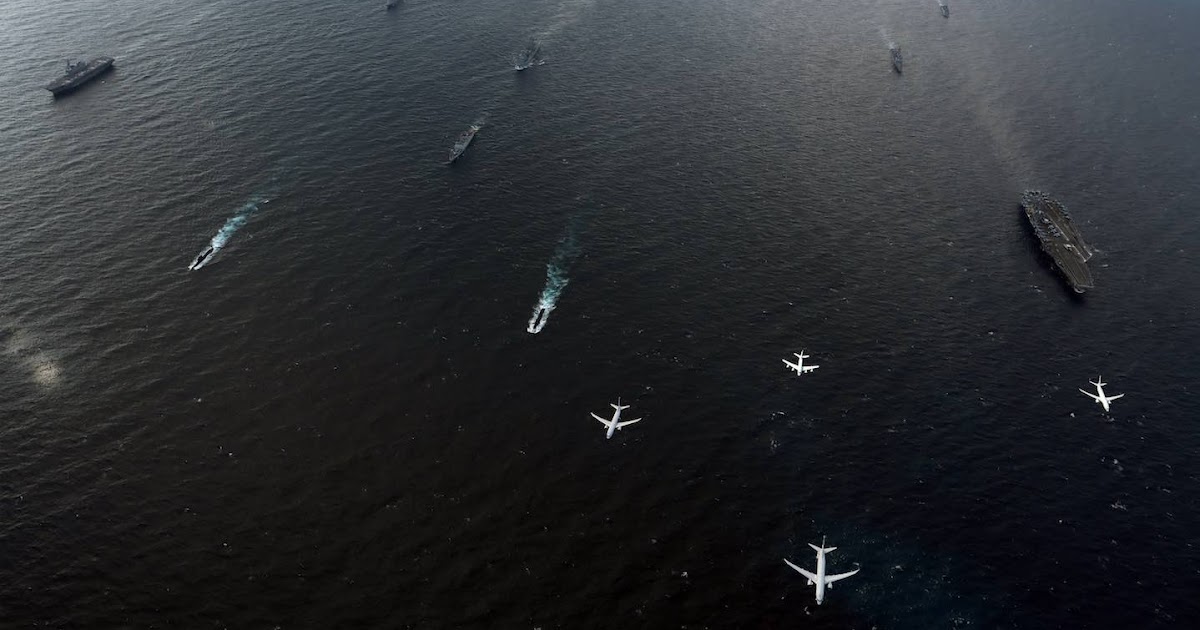
MALABAR began in 1992 between the United States and Indian maritime forces. In 2014 the Japanese Navy joined, and in 2020 the Australian Navy also joined. Beijing considers Malabar an anti-Chinese group.
By Vikas Gupta
Trade Standard, Nov 15, 22
The 26th edition of the multinational maritime exercise MALABAR–2022 culminated in the Seas of Japan on November 15, 2022. This edition marked the 30th anniversary of the exercise and was organized by the Japan Maritime Self-Defense Force (JMSDF ).
Exercise MALABAR began in 1992 as a bilateral exercise featuring maritime forces from the United States and India. In 2014, the entry of the Japanese Maritime Self-Defense Force (JMSDF) made it a trilateral exercise. In 2020, the Royal Australian Navy (RAN) also joined Malabar, making it a quadrilateral exercise.
Beijing considers Malabar as an anti-Chinese group, formed by a “Concert of Democracies”. However, public statements by participating countries express the intention to safeguard global commons and implement freedom of navigation, rather than join forces against a common enemy.
The five-day, high-paced Exercise MALABAR saw the participation of an Australian submarine and eleven surface ships, including a US Navy nuclear-powered aircraft carrier with its elements integrated air forces, as well as four long-range maritime patrol aircraft, integrated helicopters and two submarines. The exercise also involved the exchange of “Sea Riders” between the various participating ships.
The Indian Navy was represented by two Eastern Fleet warships based in Visakhapatnam – Indian Navy Ships (INS) Shivalik and INS Kamorta led by Rear Admiral Sanjay Bhalla, Officer Commanding Eastern Fleet. Indian maritime commandos (MARCOS) and a P-8I Poseidon maritime reconnaissance aircraft also participated.
INS Shivalik is a multi-role frigate and is the lead ship for Project 17, which involved the construction of three frigates at Mazagon Dock Ltd (MDL), Mumbai. INS Kamorta is a sophisticated anti-submarine corvette and was built under a four-ship Project 28 at Garden Reach Shipbuilders and Engineers (GRSE) in Kolkata.
The maritime phase of MALABAR — 2022 took place over five days near Yokosuka, Japan. A statement from the Hawaii-based United States-Indo-Pacific Command said: “This year’s at-sea exercise includes a variety of high-end tactical training events, submarine integration, anti-submarine warfare training, air defense exercises, multinational replenishment-at-sea operations, communications exercises, joint combat planning scenarios, gunnery exercises and maritime interdiction operations.
“This exercise represents a unique opportunity for our like-minded maritime forces to work together, demonstrating our shared commitment to the region and our collaborative approach to security and stability,” said Rear Admiral Michael Donnelly, Commander of Task Force 70 (CTF-70) / Carrier Strike Group 5 (CSG 5). “Now it is more important than ever for the forward deployed carrier strike group to work closely with other maritime forces and deter all who challenge a free and open Indo-Pacific.”
Participating US Navy forces include Destroyer Squadron (DESRON) 15 as well as the aircraft carrier USS Ronald Reagan, the guided missile cruiser USS Chancellorsville and the guided missile destroyer USS Milius.
JMSDF units that participated included Japanese Ship (JS) Hyuga, JS Shiranui, JS Takanami, JS Oumi as well as a P-1 aircraft.
Participants from the Royal Australian Navy (RAN) include Her Majesty’s Australian Ship (HMAS) Arunta and Stalwart and the submarine HMAS Farncomb as well as a Royal Australian Air Force (RAAF) P-8A maritime patrol aircraft .
In addition to the drills and operational exercises, the bilateral logistical support agreements between the participating countries were validated during this edition of the Malabar exercise. India and the United States had signed a bilateral logistics support agreement – called the Logistics Exchange Memorandum of Understanding, or LEMOA – which was an India-specific version of the LSA that the United States signs with all of its partner countries.
The four participating navies also had the opportunity to rehearse communication and interoperability exercises. India’s signing of the Communications Compatibility and Security Agreement (COMCASA) with the United States in September 2018 has already opened the doors to the tactical communications needed for such operations.
Even outside of the formal exercise structure, units from all four navies regularly operate together in the Indo-Pacific, fostering a cooperative approach to regional security.
On September 15, 2000, the United States further strengthened the military architecture to confront China in the Indo-Pacific, joining forces with the United Kingdom and Australia to create an “enhanced trilateral security partnership” named AUKUS (Australia – United Kingdom – United States).
Signaling that AUKUS meant business, its first announcement was that the UK and US would supply Australia with classified technology and the means to build and operate up to eight attack submarines nuclear powered (SSN).
In a statement released after the end of the exercise, India’s Ministry of Defense said, “The exercise has contributed to enhancing everyone’s understanding of operational methodologies and ability to cooperate in meeting a myriad of maritime challenges.”
|
Malabar Exercise: Country Participation |
||||||
|
India |
WE |
Japan |
Australia |
Singapore |
Total |
|
|
|
|
|
|
|
|
|
|
2014 |
3 |
5 |
2 |
– |
– |
ten |
|
2015 |
4 |
3 |
1 |
– |
– |
8 |
|
2016 |
4 |
5 |
1 |
– |
– |
ten |
|
2017 |
9 |
6 |
2 |
– |
– |
17 |
|
2018 |
3 |
6 |
4 |
– |
– |
13 |
|
2019 |
2 |
2 |
3 |
– |
seven |
|
|
2020-01 |
5 |
1 |
1 |
1 |
– |
8 |
|
2020-02 |
6 |
3 |
1 |
1 |
11 |
|
|
2021 |
2 |
3 |
4 |
1 |
ten |
|
|
2022 |
2 |
3 |
4 |
3 |
– |
12 |






